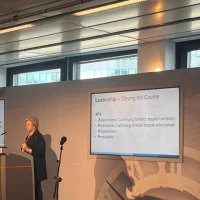It is a wide world phenomenon that we have a shortage of radiologists but this problem is even more pronounced in developing countries. Unfortunately, several of these countries lack specialists in addition to lacking radiologists. AI can have a great impact in these locations where radiologists are not present, and help to manage the work load of hundreds. To overcome the lack of radiologists or experienced radiologists, AI can be used to train new fellows and experts on organ and lesion identification, patters and recognition.
A huge problem among developing countries pertains to the scanning time and lack of high-quality images. During image acquisition, AI can reduce scanning time thanks to AI techniques for automatic patient positioning or guidance in ultrasound image acquisition.
Among many of the developing countries, their scanners do not provide high quality images. AI based solutions can help to solve this issue by producing high resolution images to improve the quality of images that are required, as well as reduce the dose administered to the patient.
AI can be used to detect diseases at its earliest stages to help create prioritisation lists or reduce the number of exams to report by filtering cases with low probabilities of abnormality. Furthermore, AI can help with the detection of localisation in lesion. So, by being to able to measure and characterise the lesion, the reporting process can be accelerated, thus AI helps to reduce reporting time.
Thanks to AI we can overcome different limitations in developing countries, including the lack of resources, such as lack of radiologists and scanners.
References:
Jimenez-Pastor A (2023) European Society of Radiology (ECR). ECR Austria.










